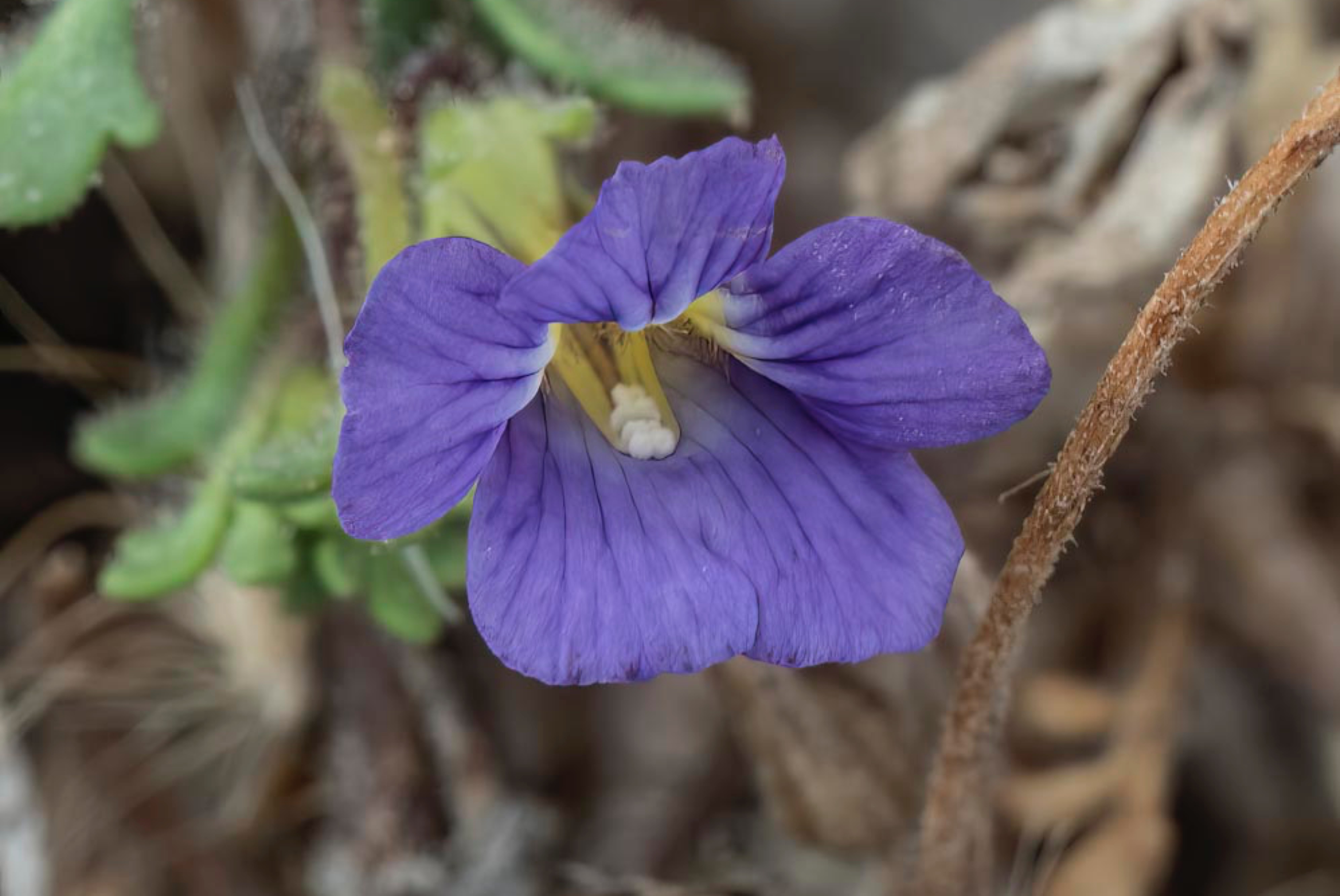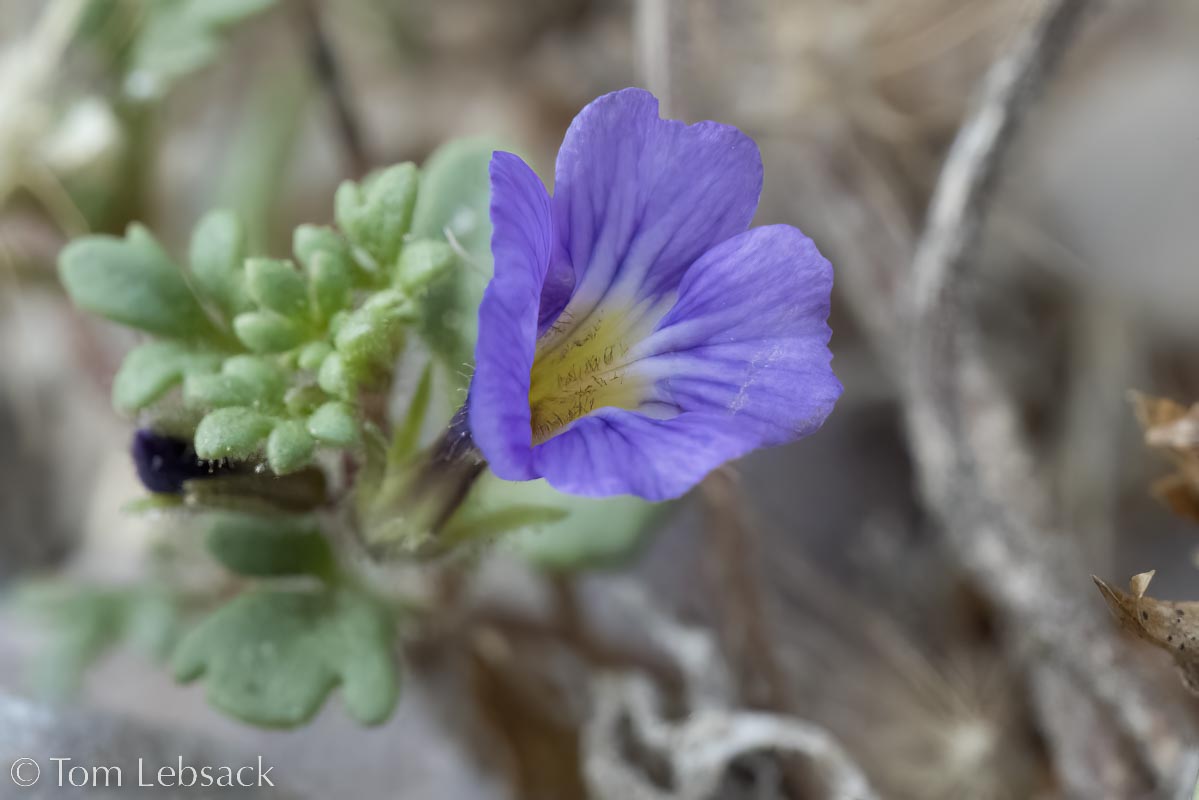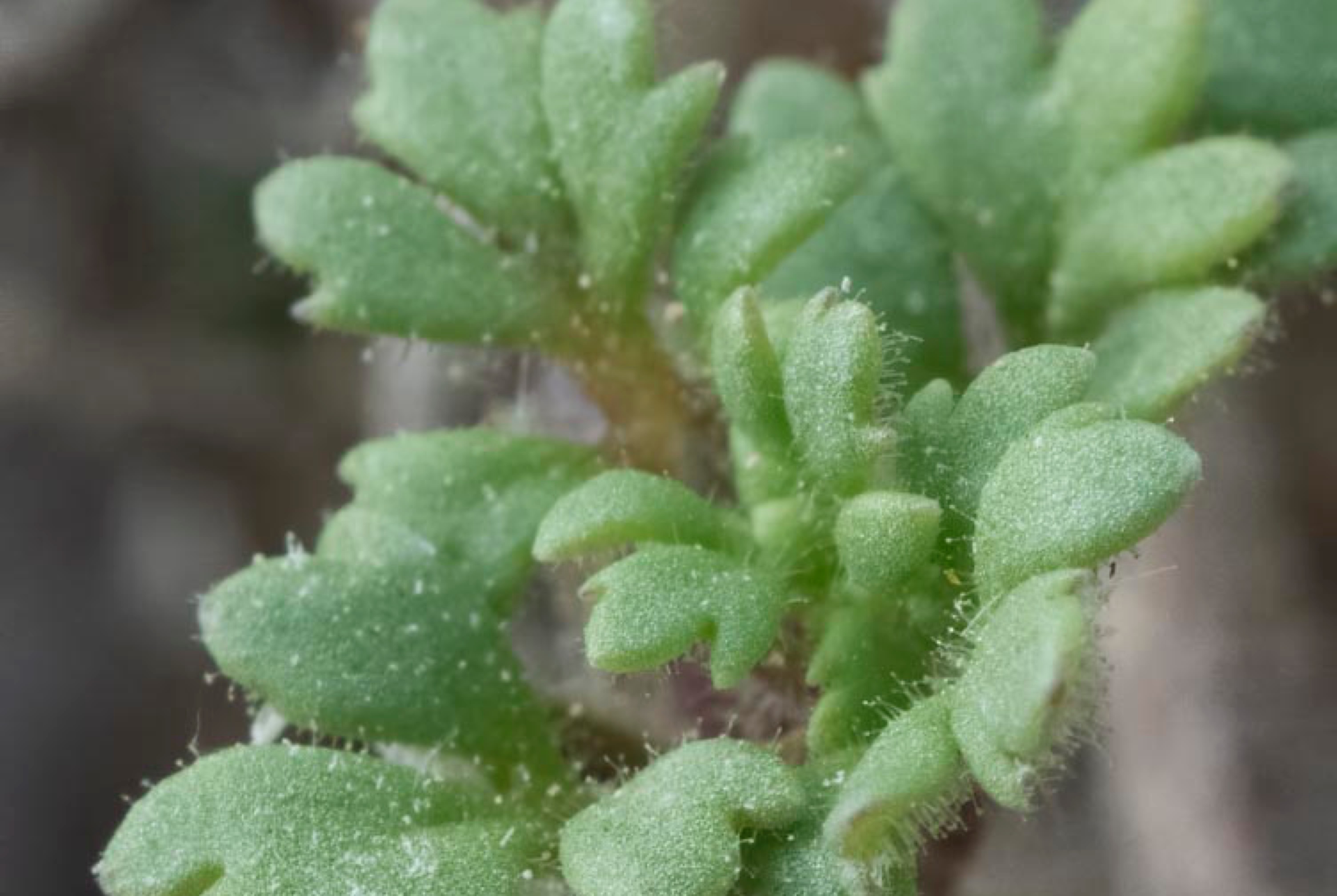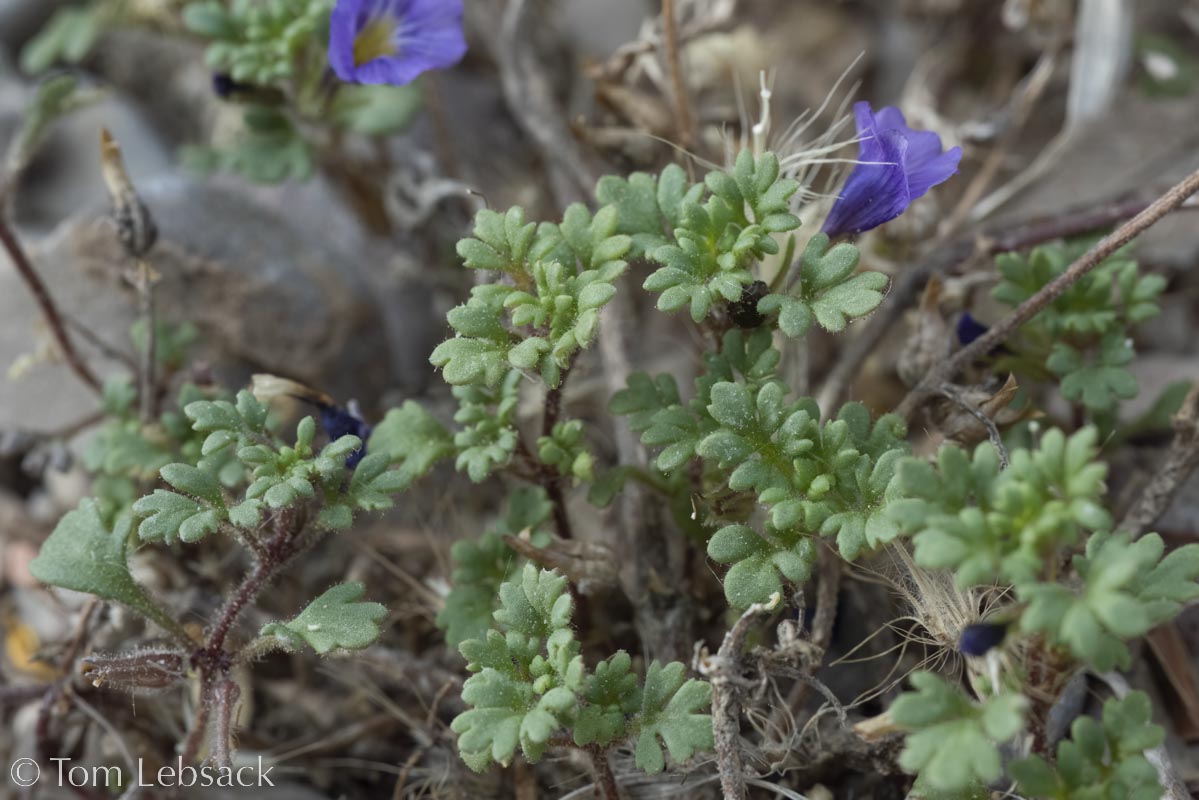Texas Wildbuds
Stemodia coahuilensis
(Coahuila Twintip)
| Scientific Name | Stemodia coahuilensis (Leucospora coahuilensis) | USDA PLANTS Symbol | N/A |
| Common Name | Coahuila Twintip | ITIS Taxonomic Serial No. | N/A |
| Family | Plantaginaceae (Plantain) | SEINet Reference |
N/A |
| Description | Habitat: Rocky, limestone soils on slopes, canyons, and alluvial fans. Plant: Widely-branched perennial about 12 inches across with woody base; young stems brownish in color, somewhat glandular-hairy. Leaves: Opposite, once or twice pinnatifid, obovate in outline and 0.2 to 1.1 inches long, blades divided into two or three lobes, up to 0.4 inches wide; blades thick with somewhat glandular-hairy surfaces. Inflorescence: Solitary, small, funnel-shaped flowers from leaf axils, corolla 0.5 to 0.75 inches long with 5 deep violet lobes and yellow/white throat; 5 sepals, linear-lanceolate, about 0.1 inch long and sparsely hairy; stamens with yellow filaments and two whitish anthers (hence the common name). Bloom Period: April to October. References: A New Species of Leucospora from the Chihuahuan Desert of Mexico by James Henrickson, An Annotated Flora of Reed Plateau and Adjacent Areas, Brewster County, Texas, by Wendy Weckesser and Martin Terry, and correspondence from Roy Morey of Lajitas, Texas, below. Note: This rare plant was first identified by Henrickson in northern Mexico in 1989 and subsequently found in Brewster and Presidio Counties, Texas. Thanks to Roy Morey for providing me with the plant ID. |
BONAP Distribution Map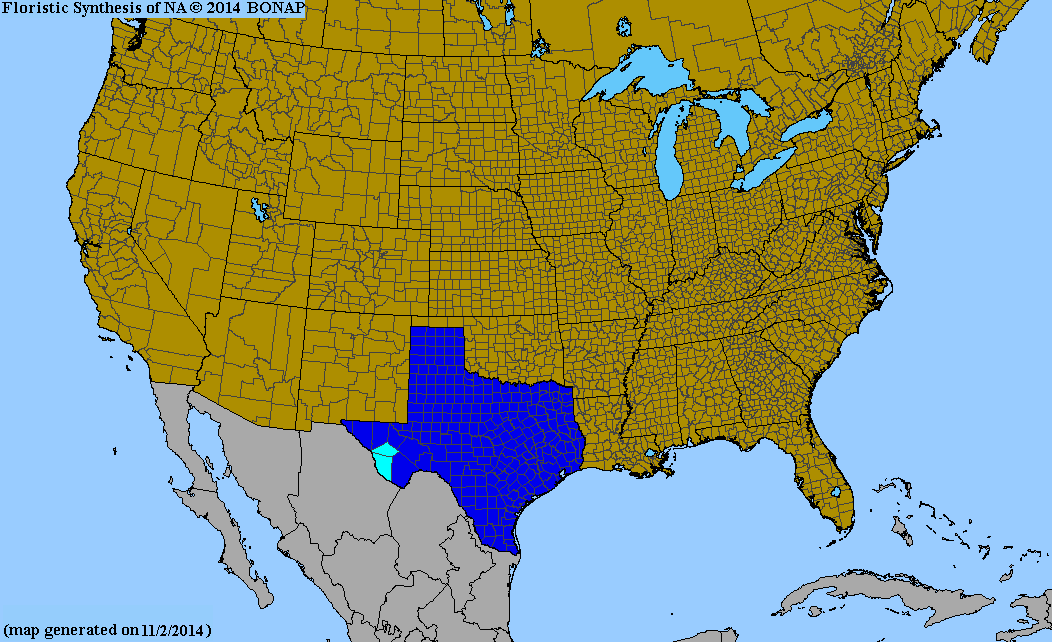 Map Color Key Map Color Key |
Texas Status: Native Rare |
Correspondence from Roy Morey about Stemodia coahuilensis, 2021
Coahuila twintip: A mostly Mexican species, this plantain is a worthy addition to the Texas flora, with relatively recent collections in Presidio, Jeff Davis, and Brewster counties in the U.S.
Apparently, the plant was first discovered by Richard Worthington in 1995, in Presidio County, in the “vicinity of Sauceda Ranch,” in what is now BBR. In 2004, Billie Turner located the species in silty limestone soils at one site in extreme western Jeff Davis County (Turner, 2005). In Brewster County, Coahuila twintip was first identified by Wendy Weckesser at Reed Plateau, and later collected by me and others in BBNP, below Stuart’s Peak and near Ernst Tinaja.
Subsequently, from 2009 to 2012, I encountered Coahuila twintip at three Presidio County locations in BBR. Coahuila twintip is much more widespread in northern Mexico, documented in southeastern Chihuahua, Coahuila, northern Durango, and northern Zacatecas.
- - Roy Morey
Banner photo of Castilleja indivisa and Lupinus ssp. taken along FM 1323 north of Johnson City, Blanco County
© Tom Lebsack 2025
Every attempt is made to provide accurate, up-to-date, and relevant information, but the completeness or accuracy of any information presented on this website cannot be guaranteed. I use authoritative references to insure high standards of accuracy and review and update the information frequently.
